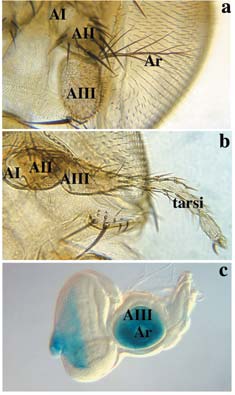Ian Duncan's major research goal is to understand how body segments become different from one another in Drosophila. His lab is also very interested in how patterning occurs within body segments.

He is particularly interested in the antennal segment, since this develops independently of the Hox genes, which specify segmental identities in more posterior segments.
He has shown that the identity of the distal part of the antenna is specified by the spineless (ss) gene, which encodes the Drosophila homolog of the vertebrate aryl hydrocarbon receptor. In mammals, this protein mediates the toxicity of a variety of aryl hydrocarbons, including dioxin. Much of the current work is devoted to understanding how ss is regulated and how its apparently disparate functions have evolved in the arthropod and vertebrate lineages.
His lab is also very interested in how patterning occurs within body segments. For this work, his group has focused on the abdominal segments of the adult, which are much simpler than those in the thorax and head.
Image caption: Antennal specification by ss. (a)Normal antenna (b) Antenna from an ss mutant fly (c)The larval antennal primordium (imaginal disc) stained for expression of the ss gene.


